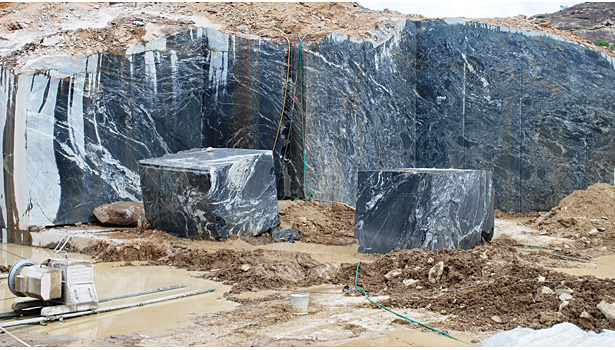Discovering the Rich History and Lasting Practices of Granite Quarrying
As we depend on the precipice of revealing the intricate tapestry of granite quarrying, a trip with time exposes not simply the physical act of removing stone yet also the cultural and historical relevance woven into the very fabric of this technique. From the ancient beginnings that laid the structure for modern-day quarrying methods to the sustainable practices that are forming the future of this sector, each carve mark on granite surface areas narrates waiting to be uncovered (granite quarries in south africa). The legacy of granite quarrying stretches far beyond plain removal; it is a testimony to human resourcefulness, strength, and the long-lasting allure of this majestic stone
Old Origins of Granite Quarrying
Going back to old civilizations, the method of quarrying granite has been an important part of human background and architectural development. The earliest evidence of granite quarrying days back to ancient Egypt, where enormous pyramids and complex sculptures were crafted from this resilient rock. The Egyptians utilized primitive tools to remove granite blocks from quarries, showcasing the significance of this material in their significant buildings.
Moving forward in history, the Greeks additionally made substantial contributions to the quarrying of granite. The Greeks utilized granite in various architectural wonders, such as temples and statuaries, showing their skill in shaping and sculpting this hardy stone. The Romans better refined the techniques of quarrying granite, using advanced tools like chisels and hammers to remove and form granite for their renowned structures.
Through the centuries, the technique of quarrying granite has developed, with modern-day technologies boosting performance while maintaining the ageless charm of this natural stone - granite quarries in south africa. From ancient human beings to contemporary building contractors, the legacy of granite quarrying remains to form our world
Development of Quarrying Strategies
The development of quarrying methods has been noted by a continuous progression in the direction of higher efficiency and precision in removing granite. Early quarrying strategies included hand-operated labor with standard tools such as blades, hammers, and wedges to remove granite blocks from the planet.
Advancements in computer-controlled tools and 3D modeling have optimized quarrying operations, leading to very little ecological influence and enhanced sustainability methods. As the demand for granite proceeds to increase, the advancement of quarrying techniques continues to be essential to conference industry requires effectively and sustainably.
Cultural Significance of Granite
Granite holds an extensive cultural significance throughout various human beings due to its enduring presence in building work of arts and respected monuments. The social significance of granite expands beyond its physical features; it symbolizes strength, stability, and eternity, making it a symbol of sustaining legacies and practices.

Lasting Practices in Quarrying
Amidst the rich history of granite quarrying and its social relevance lies an expanding focus on sustainable techniques within the market. As environmental recognition and worries about source exhaustion have enhanced worldwide, the quarrying sector has actually increasingly welcomed sustainable methods to lessen its effect on the setting and surrounding areas.

Moreover, improvement and rehab of quarry sites post-extraction her latest blog are essential to sustainable methods. By restoring quarried areas to a natural or advantageous state, such as creating wild animals environments or entertainment areas, quarriers can balance out the environmental footprint of their procedures and add positively to the regional community.
Legacy of Granite Quarrying
With a historic background soaked in workmanship and commercial development, what withstanding impact has granite quarrying left on the landscape of modern culture? The tradition of dig this granite quarrying transcends mere removal methods; it has shaped building marvels, urban landscapes, and social heritage worldwide. The long lasting nature of granite has made it a preferred selection for monuments, buildings, and framework, standing as a testament to the ability and virtuosity of quarry workers throughout generations.
Additionally, the economic impact of granite quarrying can not be ignored. The industry remains to offer employment possibilities and drive local economies in areas where granite extraction is prevalent. It has actually also stimulated technological innovations in quarrying methods and tools, causing more efficient and sustainable techniques.
In regards to sustainability, the heritage of granite quarrying includes efforts to minimize environmental effects with recovery projects and accountable source monitoring. By balancing economic rate of interests with ecological stewardship, the sector strives to guarantee that future generations can proceed to take advantage of this long-lasting natural resource.
Final Thought
